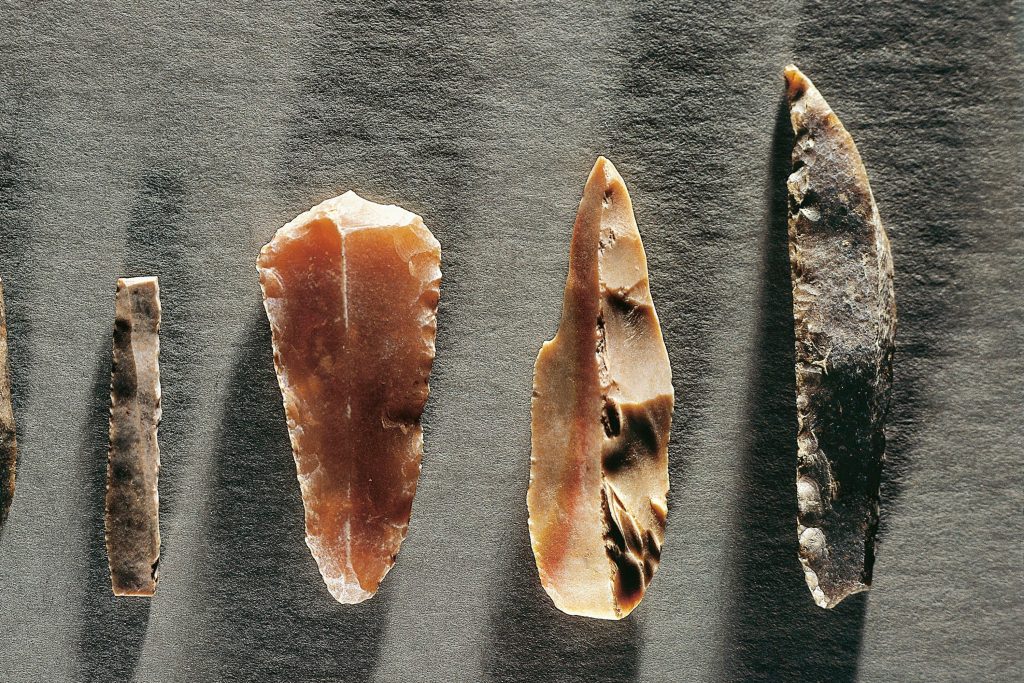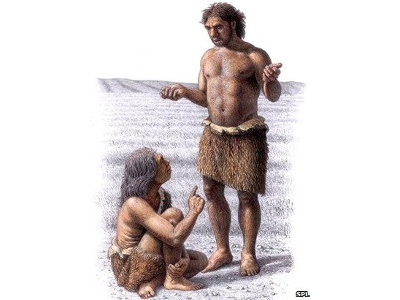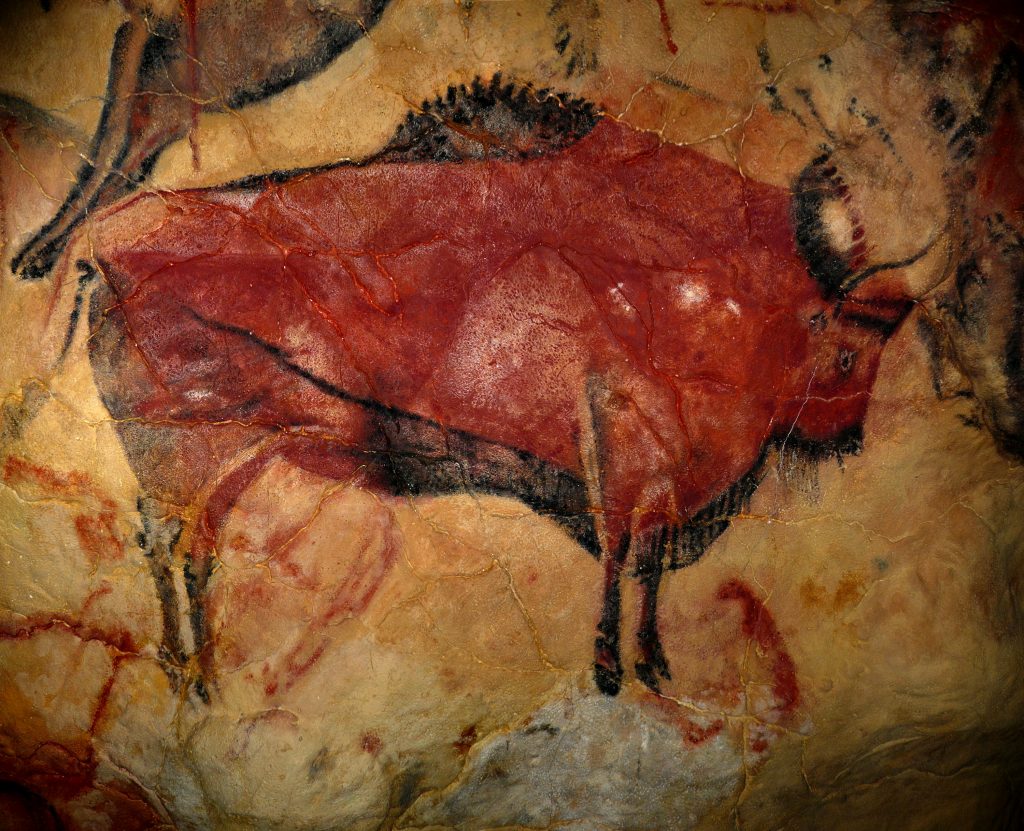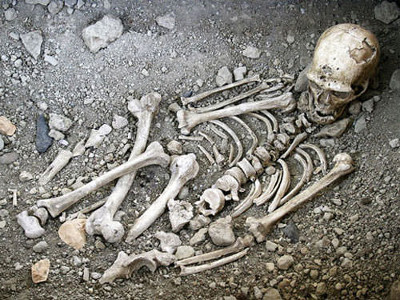Becoming “Human”
A series of major social and technological advances signal when early hominids had become “human.” Or perhaps, it was their development which made them human.
Humans (Homo sapiens) are the most abundant and widespread species of primate, characterized by bipedalism, large and complex brains enabling the development of advanced tools, culture, and language.
Humans are highly social beings and tend to live in complex social structures composed of many cooperating and competing groups, from families and kinship networks to political states. Social interactions between humans have established a wide variety of values, social norms, and rituals, which bolster human society. Curiosity and the human desire to understand and influence the environment and to explain and manipulate phenomena have motivated humanity’s development of science, philosophy, mythology, religion, and other fields of knowledge.
Although some scientists equate humans with all members of the genus Homo, in common usage it generally refers to Homo sapiens, the only extant member which emerged around 300,000 years ago. Until about 12,000 years ago, all humans lived as hunter-gatherers.

Hominid Evolution
The study of human evolution involves several scientific disciplines, including physical anthropology, evolutionary anthropology, primatology, archaeology, paleontology, neurobiology, ethnology, linguistics, and genetics. Human evolution from its first separation from the last common ancestor of humans and chimpanzees is characterized by a number of morphological, developmental, physiological, and behavioral, and environmental adaptations, the most important of which are bipedalism, increased brain size, and the evolution of a power and precision grip, a change first occurring in H. erectus.

Tool Use
The use of tools has been interpreted as a sign of intelligence, and it has been theorized that tool use may have stimulated certain aspects of human evolution, especially the continued expansion of the human brain. The oldest known tools are flakes from West Turkana, Kenya, which date to 3.3 million years ago. But the first manufactured stone tools are first attested around 2.6 million years ago, when hominins in Eastern Africa used so-called core tools, choppers made out of round cores that had been split by simple strikes. This marks the beginning of the Paleolithic, or Old Stone Age; its end is taken to be the end of the last Ice Age, around 10,000 years ago.

Fire Use
The ability to control fire was a dramatic change in the habits of early humans. Making fire to generate heat and light also made it possible for people to cook food, simultaneously increasing the variety and availability of nutrients and reducing disease by killing organisms in the food. The heat produced would also help people stay warm, enabling them to live in cooler climates. Fire also kept nocturnal predators at bay.
Fire may have been used in a controlled fashion about one million years ago from the first evidence of cooked food. However, fire was probably not used in a controlled fashion until 400,000 years ago and widespread evidence begins to appear around 50 to 100 thousand years ago.

Language
Because language emerged in the early prehistory of man, its early development has left no historical traces. Early human fossils can be inspected for traces of physical adaptation to language use or pre-linguistic forms of symbolic behavior such as: the size of the brain relative to body mass, the presence of a larynx capable of advanced sound production and the nature of tools and other manufactured artifacts.
Some scholars assume the development of primitive language-like systems (proto-language) as early as Homo habilis (2.3 million years ago) while others place the development of primitive symbolic communication only with Homo erectus (1.8 million years ago) or Homo heidelbergensis (0.6 million years ago), and the development of language proper with anatomically modern Homo sapiens less than 100,000 years ago.

Cooperation
Humans cooperate for the same reasons as other animals: immediate benefit, genetic relatedness, and reciprocity, but also for particularly human reasons, such as honesty signaling, cultural group selection, and for reasons having to do with cultural evolution. Although more of a concept than anything else on this list, evidence still appears in the archaeological record. Whether represented by communal hunting strategies, evidence of caring for the sick and wounded, or the survival of individuals injured beyond the the ability to survive on their own, learning to work together was pivotal in the development of human cultures.

Art
Art encompasses objects made by humans for any number of spiritual, narrative, philosophical, symbolic, conceptual, documentary, decorative, and even functional and other purposes, but with a primary emphasis on its aesthetic visual form rather than being purely utilitarian. The earliest human artifacts showing evidence of workmanship with an artistic purpose are the subject of some debate. It is clear that such workmanship existed by 40,000 years ago in the Upper Paleolithic era, although it is quite possible that it began earlier. In September 2018, scientists reported the discovery of the earliest known drawing by Homo sapiens, which is estimated to be 73,000 years old.

Burial Practices
Intentional burial, particularly with grave goods, may be one of the earliest detectable forms of religious practice since it may signify a “concern for the dead that transcends daily life.” Evidence suggests that Neanderthals were the first human species to practice burial behavior and intentionally bury their dead, doing so in shallow graves along with stone tools and animal bones. Some scholars believe the earliest human burial dates back 100,000 years where human skeletal remains stained with red ochre were discovered in the Skhul cave at Qafzeh, Israel.

Agriculture
The invention of agriculture first took place in Southwest Asia about 12,000 years ago and spread through large parts of the Old World over the following millennia. It also occurred independently in Mesoamerica (about 6,000 years ago), China, Papua New Guinea, and the Sahel and West Savanna regions of Africa. Access to food surplus would lead to the formation of permanent human settlements, the domestication of animals and the use of metal tools for the first time in history. Agriculture and sedentary lifestyle led to the emergence of early civilizations.
